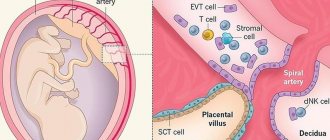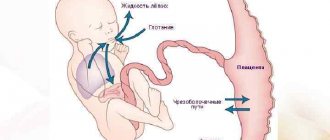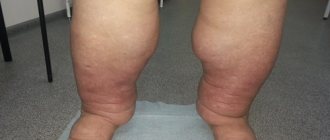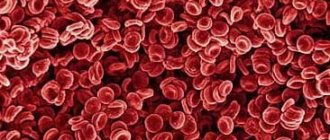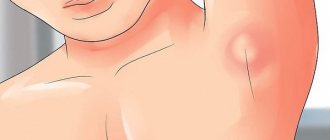From this article you will learn:
- what is deep caries,
- its differences from other forms of caries,
- stages of treatment of deep caries.
Deep caries is a designation for a type of dental caries, the peculiarity of which is that between the dental pulp (neurovascular bundle) and the bottom of the carious cavity only a very thin layer of healthy hard dental tissue remains. In other words, this is an advanced type of caries, the lack of treatment of which in the near future will lead to the development of pulpitis and, accordingly, the need to remove the nerve and fill the root canals.
This form of caries is distinguished by the presence of a deep carious cavity, which is filled with decay of hard tooth tissue and food debris. Due to the fact that the nerve is separated from the carious cavity by only a thin strip of healthy dentin (Fig. 1), patients usually complain of pain from exposure to thermal irritants. Therapy for deep caries is somewhat different from the treatment of other forms of the caries process (for example, superficial and medium caries) - which we will describe in detail and show on video in our article.
Deep caries: photo
In the absence of immediate treatment, this can lead first to the development of pulpitis (inflammation of the dental pulp), and then periodontitis. With periodontitis, inflammation extends beyond the dental pulp, which is accompanied by the appearance of a focus of purulent inflammation at the apex of the tooth root, i.e. a granuloma or cyst occurs. In the video below you can see how tooth tissue affected by caries is removed in case of deep caries (estimate the depth of the carious cavity).
Deep caries: video
Definition of the concept in dentistry
Deep caries is the last stage of the carious process occurring in the tooth, which is characterized by extensive damage not only to hard tissues, but also to the deep layers of dentin. In general, the concept of “deep caries” reflects the depth of the lesion.
Caries can be:
- primary - a consequence of untreated secondary caries;
- secondary (recurrent) - the occurrence of a carious process under a filling in a previously treated tooth.
Based on the sensation of pain and clinical examination, the disease is divided into 3 forms:
- Acute form. It is determined by the narrow entrance opening of the carious cavity and the wide base (during examination), as well as by descriptions of the patient’s sensations - reaction to food temperature and chemical irritants.
- Chronic form. It is characterized by a wide (funnel-shaped) inlet and a narrow base. The patient feels pain when the “hollow” is clogged with food and during examination with a probe by the dentist.
- Deep cervical caries. It is characterized by the development of demineralization of enamel tissue and the carious process in the cervical area of the tooth (near the gums).
According to the clinical course, caries is also divided into several forms:
- compensated,
- subcompensated,
- decompensated.
Folk remedies in the fight against dental disease
Want to know how to cure tooth decay at home without a dentist? To help yourself maintain the health and integrity of the dental structure, you should remember how and how caries is treated. You can influence the condition of your teeth and overall well-being by adjusting your diet and taking more careful oral care. By reducing the consumption of sweets and soda, unhealthy foods and fast food, while adding fresh vegetables and fruits to the menu, you can prevent the occurrence and development of the disease.
Various folk remedies used in oral care will help improve the general condition of teeth and strengthen their structure. You can use decoctions of sage, calamus and other herbs for rinsing. In addition, you should rinse your mouth and try to brush your teeth after every meal. In daily hygiene care it is necessary to use special dental floss. It will help remove food debris from the interdental spaces, stopping the proliferation of pathogenic bacteria. You can do all of these preventive procedures at home yourself.
Diagnostics
To make a diagnosis, diagnostics are carried out, which include:
- external inspection using a mirror;
- instrumental examination using a probe;
- voicing symptoms (complaints) by the patient;
- thermal diagnostics (checking the reaction to cold and hot);
- electroodontic diagnostics (testing the reaction to exposure to current);
- radiography (performed if the presence of secondary deep caries is suspected or to exclude it).
If upon examination significant damage (destruction) of the tooth crown is detected, expressed by the presence of a deep carious cavity and accompanied by pain during probing, then this confirms the presence of deep caries in the patient.
In the acute form, the carious cavity is filled with light, softened dentin. In chronic deep caries, the walls and bottom of the cavity are filled with a layer of dense pigmented dentin (from brown to black). Percussion of the tooth is not accompanied by pain.
Caries, statistics
Data from various studies indicate that in equatorial regions (Africa, Asia) caries is less common than in the northern and polar regions (Scandinavia, North America). People living in developing countries also have a higher incidence of dental caries, but in this case this is not due to genetic predisposition or the influence of external factors, but to a much lower availability of dental care than in developed northern countries.
Caries is of infectious origin associated with the activity of microorganisms such as veyonella, lactobacilli and other microbes. Streptococci play a leading role in the development of dental caries disease.
A decrease in resistance to caries is associated with a decrease in the calcium content of tooth enamel, with a decrease in the calcium/phosphorus ratio, as well as with immune disorders in general. Researchers associate the decrease in the body’s immunity mainly with a decrease in the content of secretory immunoglobulin type “A” in saliva, which prevents the attachment of microorganisms to the surface of tooth enamel and thereby prevents the formation of soft plaque, which, with insufficient hygiene, is susceptible to hardening and the formation of hard tartar.
What are the differences from other forms of the disease?
Deep caries is very similar to some forms of the disease, but there are still visible and invisible differences.
Difference from pulpitis
Pulpitis is a complication of advanced caries. The forms of the disease can be distinguished from each other by their characteristic symptoms:
- Defeat. With pulpitis, the nerve is affected; with caries, the nerve remains unharmed.
- Feelings of pain. With pulpitis, pain can occur spontaneously, even without exposure to irritants on the tooth. With caries, pain disappears along with the disappearance of irritants.
- Night sleep. With pulpitis, sleep can be disturbed due to severe pain; with caries, the tooth does not hurt at night.
Difference from average caries
The similarity between the two forms of the disease is that the patient in both forms feels pain from cold, sour or sweet foods. However, with average caries they go away within 1-2 minutes, with deep caries they last longer.
Medium caries is characterized by the fact that in this form the carious lesion does not affect the tooth pulp and does not cause inflammation of the nerve, as in deep caries.
Causes of dental problems
The occurrence of a problem such as caries is associated with the destructive effect of bacteria on the structure of the teeth. The microflora in the oral cavity includes a huge number of microorganisms. Even proper and thorough brushing of teeth with special means and the use of rinses cannot make the oral cavity completely sterile. The proliferation of pathogenic bacteria begins 2-4 hours after the last cleaning.
What exact reasons can cause tooth damage?
- poor oral care;
- unbalanced diet;
- decline in immunity;
- gastrointestinal diseases;
- avitaminosis;
- insufficient amount of minerals (calcium, fluorine) in drinking water.
Stages of treatment
Treatment of deep caries is impossible without anesthesia (pain relief) and it takes place in several stages.
- Anesthesia. It is carried out using injection (infiltration or conduction) administration of an anesthetic substance.
- Drilling out a carious cavity using a drill. In this way, the specialist can reach and remove all affected areas of dentin, which is very important to prevent relapse under the filling.
- Treatment (disinfection) of the walls of the tooth and the bottom of the cavity.
- Installation of a therapeutic insulating pad and temporary or permanent filling.
- The final stage involves grinding and polishing the filling.
The following factors influence whether a filling will be installed - temporary or permanent:
- at what distance from the pulp is the carious cavity located;
- parameters of dentin, which separates the pulp from the tooth cavity;
- degree of pain.
If there is a high probability of inflammation developing in the pulp area, the dentist will place a temporary filling. And only if there are no complaints of pain and discomfort for several days, the patient will have the temporary filling replaced with a permanent one.
Children and pregnant women: features of their treatment
Methods of dealing with dental problems in a child depend on his age. When looking for an answer to the question of how caries of baby teeth is treated, you need to take into account the degree of neglect of the disease. Delivering a lot of unpleasant experiences to a small patient, it affects the growth and development of permanent (molar) teeth. To prevent them from being damaged during teething, you should not turn a blind eye to the existing carious cavities in your child’s mouth. How to treat bottle caries is decided directly by the dentist himself, in consultation with the baby’s parents.
Many expectant mothers are concerned about the question of whether caries can be treated during pregnancy. The likely consequences and negative effects of painkillers on the developing fetus frighten most pregnant women. Exposure to an even greater risk of developing this disease, young mothers should treat their health with increased attention. Beginning damage to tooth enamel should be stopped immediately to prevent possible complications in the form of pulpitis or the development of a cyst.
Deep caries of the front teeth. What are the differences in treatment?
Deep caries of the front teeth should be treated as carefully as possible so as not to burn the pulp. The main difficulty in treatment is:
- minimum thickness of all tooth tissues;
- inconvenient location of the cavity, if we are talking about caries located in the interdental space.
When infection penetrates into the pulp, pulpitis develops rapidly. A few hours is enough. The disease is accompanied by increasing pain. It needs to be treated immediately.
Classification of caries by localization
Scientist Black (USA) developed a classification of carious cavities by location:
- Class I: damage to cavities in the area of fissures and natural recesses of the teeth;
- Class II: damage to cavities located on the contact surfaces of small and large molars;
- Class III: damage to cavities located on the contact surfaces of the incisors and canines without involving the cutting edge;
- Class IV: damage to cavities located on the contact surfaces of the incisors and canines, involving the cutting edge and corners;
- Class V: damage to cavities located in the neck area of all groups of teeth;
- Class VI: damage to cavities of atypical localization - the cutting edges of the frontal teeth and the cusps of the chewing teeth.
Is it possible to treat deep caries of a wisdom tooth?
The patient can make the decision to remove a wisdom tooth if pain occurs on his own. But only a highly qualified dentist can make a verdict on its treatment.
Treatment of a carious "eight" is considered rational if it has a partial covering in the form of a hood of gum, as well as an antagonist - the third molar located on the opposite side.
Removal shown:
- with a horizontal tooth position;
- presence or absence of 1st and 2nd molars;
- impossibility of treatment due to incomplete opening of the mouth;
- displacement of teeth in a row due to wisdom teeth.
Areas affected by caries and stages of the disease
Caries is a dental disease in which, under the influence of microorganisms and other factors, the structure of dental tissues is destroyed.
The mechanism of development of the disease is due to the vital activity of bacteria Streptococcus mutans and some other species. They have a cariogenic effect and create conditions for the development of the carious process. It goes like this. Bacteria accumulate on teeth and form a biological film called plaque. When we eat foods rich in carbohydrates, plaque bacteria actively process the sugars they contain and produce organic acids that are dangerous to our teeth. They destroy the enamel structure, deprive it of minerals, and penetrate deep into the tooth. The more acids produced by oral microorganisms, the more active and rapid the destruction of dental tissue.
Damage to teeth by caries does not occur instantly; it can take several months from a small spot to the appearance of a hole in the tooth. Based on how deeply the carious process penetrates, several stages of the disease are distinguished.
- The earliest is the spot stage.
A small focus of demineralization appears on the surface of the enamel. It looks like a whitish dot or streak. It is almost impossible to notice such changes with the naked eye. And provided that there are no other symptoms (pain or discomfort) at this stage, a person often misses the onset of caries and does not see a doctor.
- Superficial caries.
If the stain was not noticed in time, it gradually grows, the enamel tissue is destroyed, and a cavity is formed in it - a small hole. As a rule, there is still no pain, although food may get into the cavity or tooth sensitivity may increase.
- Average caries.
The form of average caries is characterized by the penetration of the pathological process into dentin - the bone tissue under the enamel. At this stage, a carious cavity forms in the dentin, pain becomes severe, and the tooth reacts to temperature or taste stimuli. Most often, people go to the dentist with the listed symptoms.
- Deep caries.
If for some reason you do not treat average caries, the pathology progresses and approaches the pulp - the dental nerve. This is the most complex and dangerous form of caries, because there is a high risk of infection spreading to the pulp, periodontium and the development of complications.
If the tooth continues to hurt
Mild pain immediately after treatment of deep caries is not a cause for concern. They are recognized by dentists as the norm and do not require special treatment. Mild pain in the tooth after treatment of deep caries can be explained by the fact that the gums were affected during the treatment procedures. After 1-2 days, the discomfort will go away on its own.
But if, after treatment of deep caries, the tooth hurts severely and for a long time (more than 2-3 days) and, against the background of the pain syndrome, a high temperature and swelling of the gums appear - all this may indicate a poor quality of treatment and the development of an inflammatory process under the filling. With such symptoms, you cannot do nothing: you need to urgently contact the dentist.
To eliminate the risk that your tooth will hurt after treatment, you need to carefully choose the clinic where you will have your teeth treated. You should not choose dentistry based on the most beautiful advertising that promises the lowest prices - you should find out all the details about the level of equipment of the clinic, the technologies that are used in it, the level of qualifications, and the doctors working in it.
All conditions for high-quality treatment of deep dental caries have been created in our clinic in Moscow - VENSTOM.
Calculate the cost of treatment by taking a short test in 20 seconds!
Do not delay your treatment, because in this matter time plays against us.
Varieties
Depending on the symptoms and causes of dental caries, localization, systemicity, frequency of relapses, as well as other characteristics, the disease is divided into types.
Classification by intensity of spread:
- single (not accompanied by additional symptoms);
- multiple (systemic) – affects the entire series, new foci quickly appear, the body’s immune defense is weakened.
Types according to developmental complexity.
- Uncomplicated. Additional disorders have not been diagnosed, and there are no negative consequences with timely dental intervention.
- Complicated. Pulpitis and periodontitis appear. Therapy takes a long time and is difficult.
By stage of the process
Depending on the degree of neglect of the pathological condition, the disease is divided into successive stages.
- Spot. Pale whitish or dark formations and stripes are visible on the surface. The patient is not in pain, he may not even notice any external changes when examining the oral cavity.
- Superficial lesion. The black or brown holes increase in size. Sensitivity occurs when consuming hot, cold, sour and sweet foods and drinks.
- Average caries. Dentin is destroyed. A person is in pain, unpleasant sensations are constantly present and do not depend on the time of day. Only installing a filling will help.
- Deep destruction. All layers rot, the pulp is affected. Experienced doctors can save the tooth by resorting to depulpation. It is often necessary to remove diseased units and subsequently install prostheses or implants.
By localization
This is a popular classification according to Black, according to which the disease is divided into classes depending on the location of the lesion and its depth.
- First. Erosion of the enamel occurs, the process reaches the dentin. At first, nothing is visible on the surfaces, but over time, slight pigmentation is visualized. In this case, you can do without preparation.
- Second. Chewing molars and premolars on both jaws are affected. The shade of the outer layer changes.
- Third. The front incisors and canines suffer. This problem is typical for those with a sweet tooth.
- Fourth. Dentin tissues are subject to severe destruction. Urgent medical intervention is required.
- Fifth. The most severe degree. All rows in the area of contact with the gums are affected. This is dangerous because the integrity of the dentin near the roots is compromised.
By frequency of occurrence
The disease may be detected for the first time. In some cases, an infectious process may develop directly under the filling material.
International Classification of Diseases (ICD)
Types of the disease, officially established:
- carious lesions of enamel;
- bacterial destruction of dentin;
- infection of the root system;
- suspended form;
- odontoclasia;
- other caries.
Cost of the service in Moscow
Of course, the cost of treating deep caries will be higher than the cost of treating initial caries, because the treatment process will be more complex, including various manipulations and carried out in two stages.
On average, the cost of treating deep caries of one tooth can amount to 5-6 thousand rubles, and this is if there is no need for treatment of the tooth canals. If you want to find out for yourself the exact cost of caries treatment in your case, you definitely need to visit the dentist’s office. The doctor will examine the clinical picture, conduct a diagnosis and, before starting treatment, announce its full cost.

